Questionmy 4 month old leopard gecko is having problems with his eye. He is shedding right now but all the skin from his face is gone but the skin on his body is not. It looks kinda like its all hard around the edges and swollen. im really worried i hatched him myself from my other geckos and i really dont want him to die. He wont eat i dont think he can see so i have been hand feeding him crickets.
AnswerHi Aimee,
Are you providing a humid hide for your leos? If not, its very important to do so as they rely on this to help with their shedding process. I am including a basic care sheet that I wrote., In it is a simple way to make a humid hide.
You really don't say if the hard area is around his eye. If it is, and you removing it once does not help, he does need to see a vet. For the rest of the shed, you can give him a soak in a warm, shallow pan of water.
First, if you are using sand (which is deadly to leos) or other loose substrates in his tank, please remove them as these can be a part of the eye problem. The substrate may have gotten into his eye and scratched it.
If there is still shed around the eye, you can try to use a moist cotton swab and gently remove the stuck shed. With the swelling, its most likely that the eye has been scratched and is irritated. You can try flushing out the eye with sterile saline solution such as used for contact lens wearers. Do not apply pressure when flushing it out as you don't want to damage the eye.
A vet will most likely flush out the eye and use gentamicin eye ointment in the eye for a few days. Depending on if there is an infection in the eye, he may even prescribe an oral antibiotic.
With the eating, its important to get him eating. Try breaking the hind legs off the crickets which will prevent the crickets from jumping and make them an easier meal for your leo. Also, try hand feeding. If you are unsure of using your fingers to hand feed, get a pair of plastic tweezers to do this. You can also try offering some wax worms but don't rely on them as a main diet as that they can cause fatty liver disease when used all the time.
If he still refuses to eat, you may have to make a slurry for him to eat from an eye dropper. A simple slurry can consist of some baby meat, baby food squash, pedialyte, calcium powder with vitamin D3(just a pinch)and acidophilus(1 capsule) Throw in some mealworms(if you can handle this) and blend all in a blender. Offer this with an eye dropper, just touching it to his lip which he should lick at. PLEASE...this is only a very short term slurry...a few days only until you can get him to the vet. The slurry contains a lot more vital ingredients in the original recipe which can be found at http://repticzone.com/forums/Geckos-Leopard/messages/1758235.html
Double check all your care, especially humid hide, temperatures and substrate.
If you are using a light that is really bright during the day, I would switch to a less bright light such as a soft light. You may also find that shading the brightness of the lightbulb with hanging vines, fake plants, etc works.
BASIC CARE FOR A LEOPARD GECKO
Leopards are pretty easy to care for but they do need
special care. Here are some of the basic needs of your gecko.
HOUSING: The need to have at least a 20 gallon long tank for one Leo. This needs to have a secure fitting screen top...they can be quite the escape artists!!! They need to have a humid hide box.You can make this with something as simple as a small plastic dish with a hole cut in one side and a small mesh bag filled with some Sphagnum moss coconut bark or Peat moss that you mist.
I made mine out of the small plastic folgers coffee containers...I cut an opening in the lid..and put the moss in..they LOVE it. I use the terrarium moss in mine.
I use that on the warm side of the tank. Be sure to provide a cool hidebox on the other end. I also provide a mid temperature hide...which is in the middle of the tank.I use the critter caves which you can purchase. NOT the ones that have heat in them!!!!
Provide secure climbing areas for your gecko. Fake plants, rocks and branches are all fine to use. be sure there are no wires or sharp ends to any fake plants you use.
*****SUBSTRATE:(that's the stuff on the floor of your tank) Newspaper, lizard carpet or paper towels work great and are easy to clean and are much safer than any loose substrate. Sand or other loose substrate is not recommended as that they can be deadly to the leo when it is ingested(eaten, even by accident while eating their insects)...A very graphic site of an impacted leo surg can be seen at http://homepage.mac.com/exoticdvm/reptile/PhotoAlbum181.html it is very graphic!!! ******What I have found that works great for safety and heat distribution is using about 1/4 inch of childrens play sand(since the tiles fit tight together, there is no sand danger) on the bottom of the tank and on top that you place ceramic or slate floor tile. What is nice is that the 12 x 12 squares fit perfect in a 20 gallon tank with no spaces between the tiles. The sand and the tile distribute the heat wonderfully. Using the under tank heater as described is what distributes the heat. Also, overhead heat will help in heating the tiles...I've been using this set up for several years and the leos love it. Using a tile that isn't smooth is recommended. **********
TEMPERATURES: They need a warm area ( on the floor) of 88-92 degrees and a
cooler area in the upper 70s, low 80s. At night their temperature can drop to the low to mid 70's.
Never use a hot rock for a leopard gecko...or any reptile.
They can severely burn any reptile. You can use a heating
pad under the tank,under tank heater for the warm area. You can use a regular household lightbulb in a dome fixture with a ceramic socket in it to keep the warm area at the 88-92 degree area if needed there, otherwise, placing the lightbulb about midway in the tank will give the needed temeratures throughout the tank. You may have to play with the wattage of the bulb but generally 40-60 watts is sufficient.At night, no white light. If room temperatures stay above 70 degrees, no extra night heat is needed. The undertank heater or heating pad should cover about 1/3 of the tank....be sure to raise the tank up about 1/4-1/2 inch off the stand when using an undertank heat source to prevent heat build up which can cause the glass to break and hot spots in the glass. Be sure to have a good layer of newspaper, carpeting or, even a thin flat rock(such as tile) on top the area that the undertank heat source is placed...if you use a thin rock or tile, it helps to distribute the heat very well.
You can use the special nighttime lights that are designed for reptiles. I like using a ceramic heat emitter on a thermostat for nighttime heat.
DO NOT use black lights or party lights as they can cause eye damage!!!!
The wattage you use will vary based on room temperature and size of tank.
LIGHTING: Leopard geckos do not need UVB lighting but it does not hurt them to give them uvb. They should have some type of light during the day, be it a uvb tube, regular florescent light, reptile day light or regular household lightbulb. NO white lights at night!!!
FEEDING: Geckos should not be fed crickets or other insects that are bigger than the space between their eyes. Generally, hatchlings can be fed more than once a day,juvys can be fed twice a day, adults are fed once daily or every other day, in the early evening. Crickets and other food items such as silk worms, super, and an occasional treat of a wax worm, need to be dusted with a calcium supplement two times a week and also they should have a small dish of calcium in their tank. I use the lid of a milk jug for the little dish of calcium in their tank. For dusting the insects, Use a calcium with no added phosphorus. Insects must be gut loaded(fed) for at least 48 hours prior to feeding your gecko. Remove any uneaten crix or superworms after 15-20 minutes..... Place a piece of cut potato in the tank so that if you have missed any uneaten insects, they will eat the potato instead of nibbling on your gecko!!!
*************You have to be sure to feed your crickets and insects the right foods before feeding them to your gecko. If your crickets/insects are not healthy and well fed, your gecko will not get the nutrition he needs. You can gut load your crickets and insects greens, veggies, cereals or specially designed commercial foods for crickets or the insects you are feeding. ************
Be sure to have a small dish of clean water for your gecko at all times!!
You can offer them some baby food or fruits on occasion ...
Mine will even eat a small piece of watermelon now and then.WATER: always provide a dish of drinking water. If you choose to mist your gecko to drink, its best to not get the tank too wet as that they do not do well with higher humidity. Sometimes its better to take your leo out of their tank to mist them to get them to drink!!!
HANDLING: Some geckos enjoy being held...others prefer not to be handled at all. Be sure to be very gentle when holding your leo and NEVER grab them by the tail! Their tails are extremely fragile and will break.
I do suggest finding a vet that can treat reptiles BEFORE you actually need one!!! To find a vet that is able to care for reptiles:
http://www.herpvetconnection.com
http://www.arav.org/ECOMARAV/timssnet/amm/tnt_mdsearch.cfm
http://www.anapsid.org/vets/
For more information on leopard geckos:
http://www.drgecko.com
If you have any questions or don't understand something, please let me know.

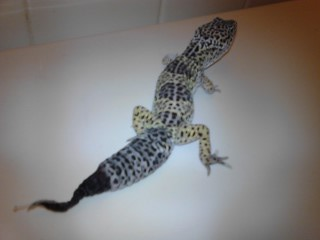 leopard gecko may have an infection or disease
Questioninfection or disease
QUESTION: Hey my le
leopard gecko may have an infection or disease
Questioninfection or disease
QUESTION: Hey my le
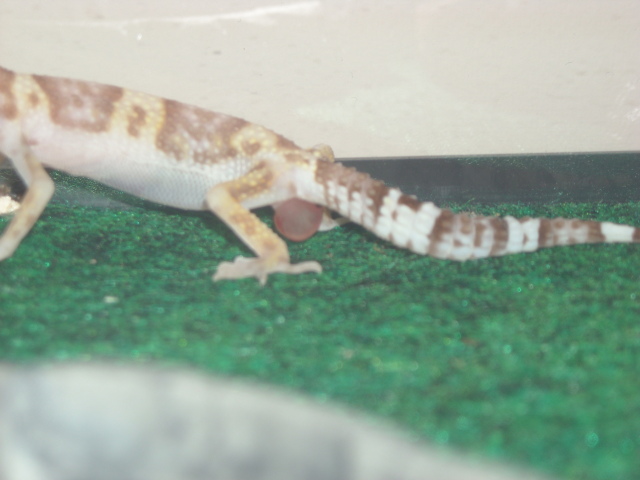 Worried About Leopard Gecko
Question
Yoshis problem
Hi, Yexalen
I have a juvenile
Worried About Leopard Gecko
Question
Yoshis problem
Hi, Yexalen
I have a juvenile
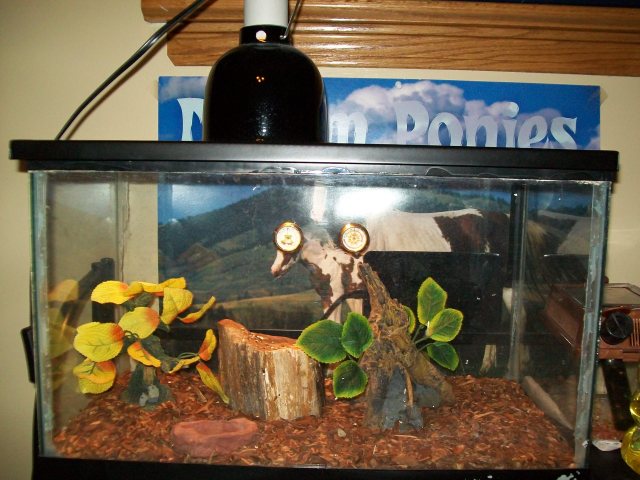 questionable sick green anole
QuestionQUESTION: Hi, I currently have a female green a
questionable sick green anole
QuestionQUESTION: Hi, I currently have a female green a
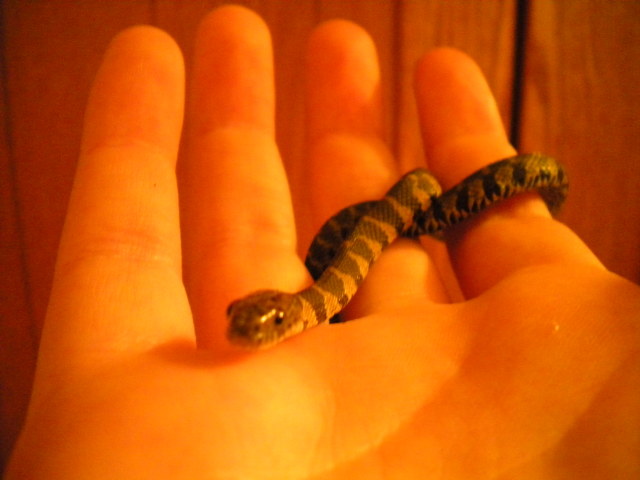 N.B. Water Snake
Question
Northern banded water
Hello. I recently got a
N.B. Water Snake
Question
Northern banded water
Hello. I recently got a
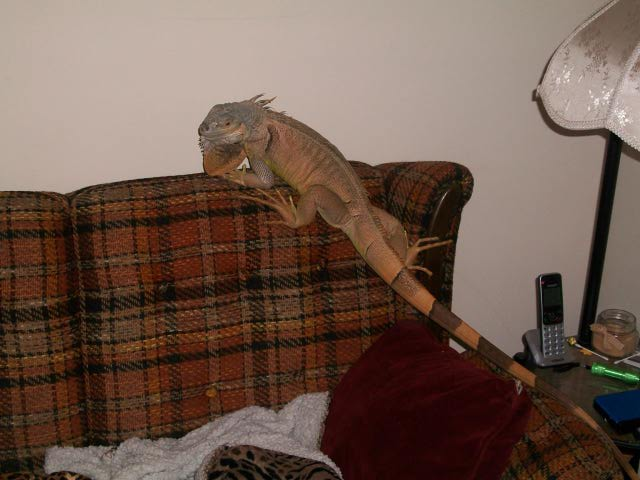 Green Iguana
QuestionJade
Jade
QUESTION: hello i Bough
Green Iguana
QuestionJade
Jade
QUESTION: hello i Bough